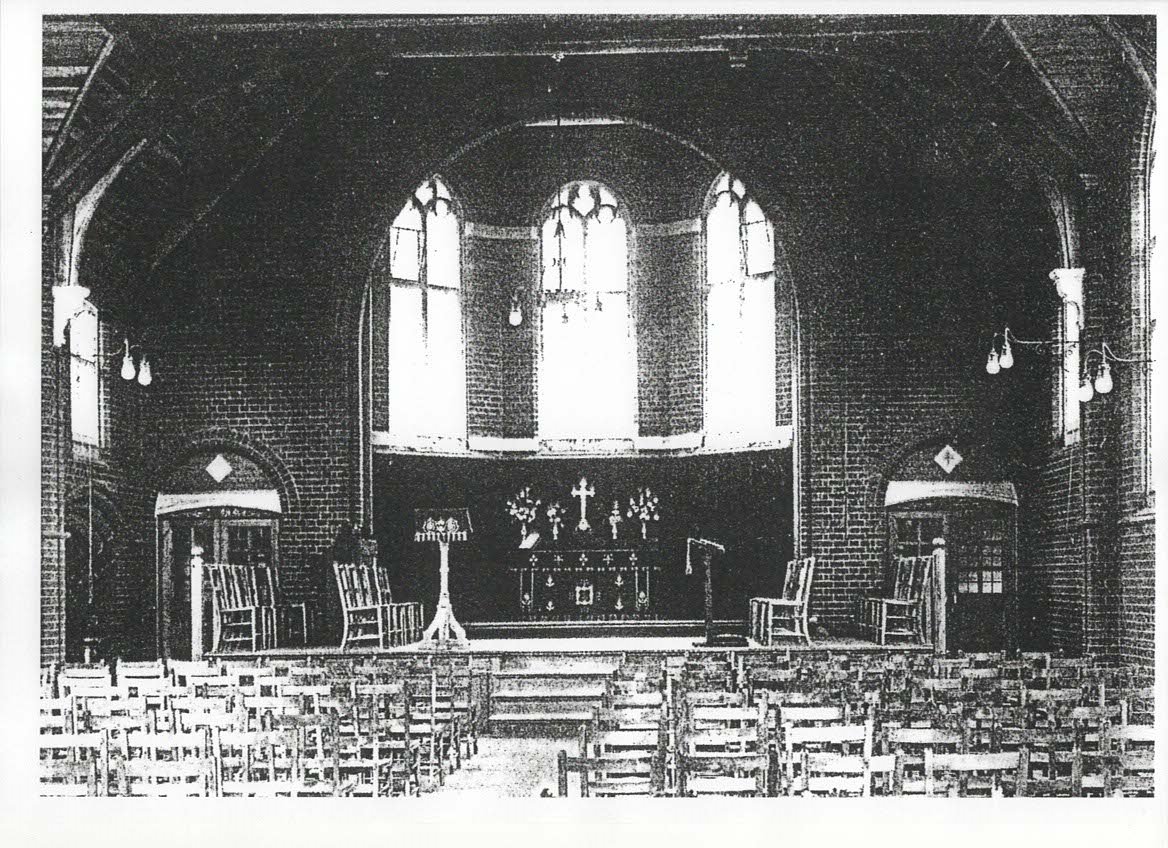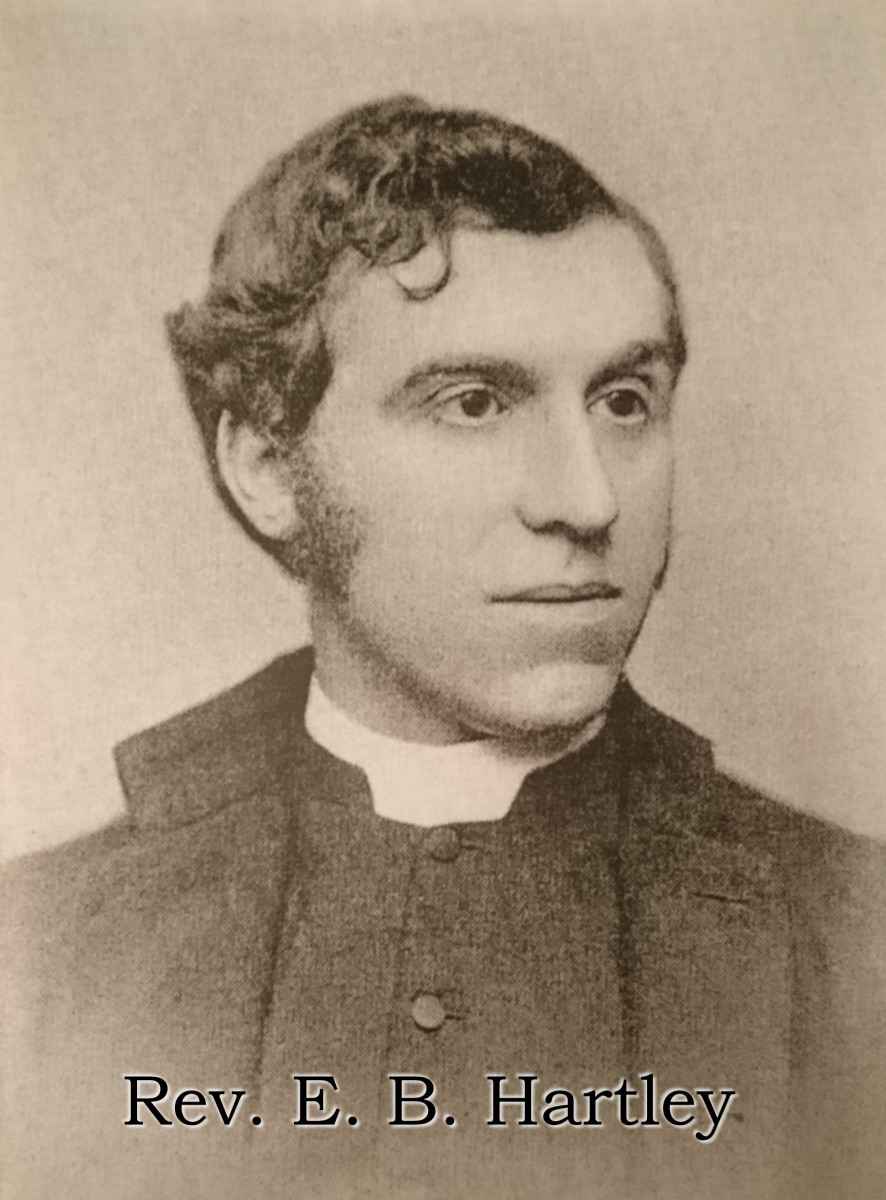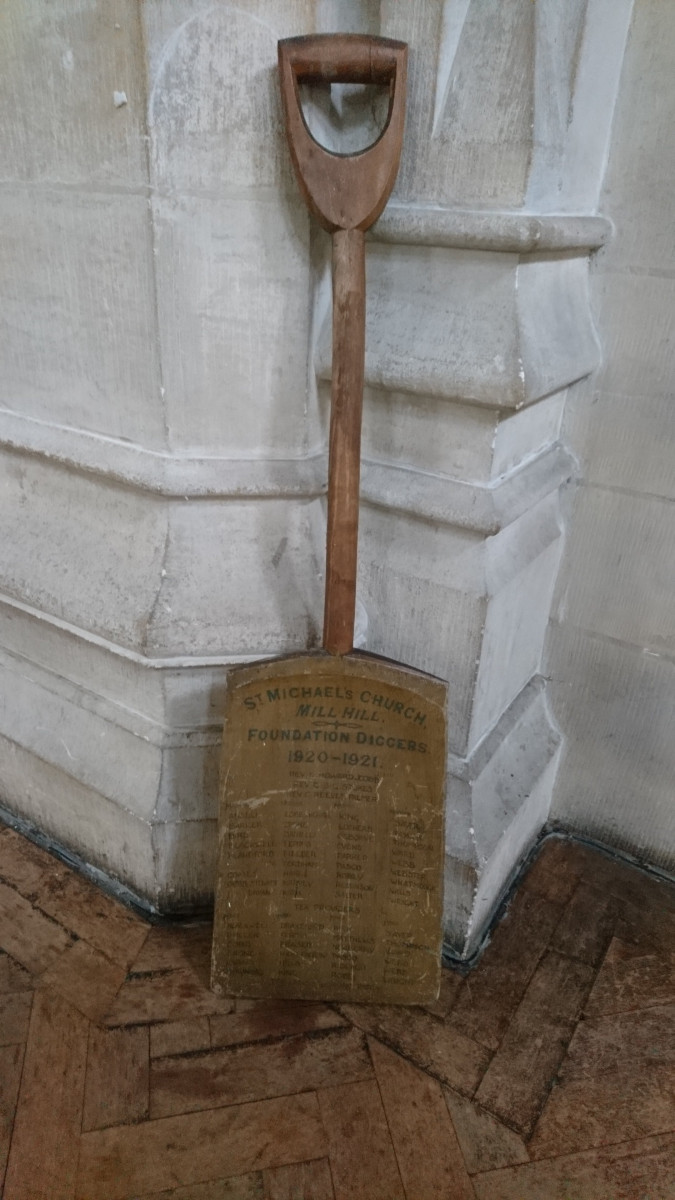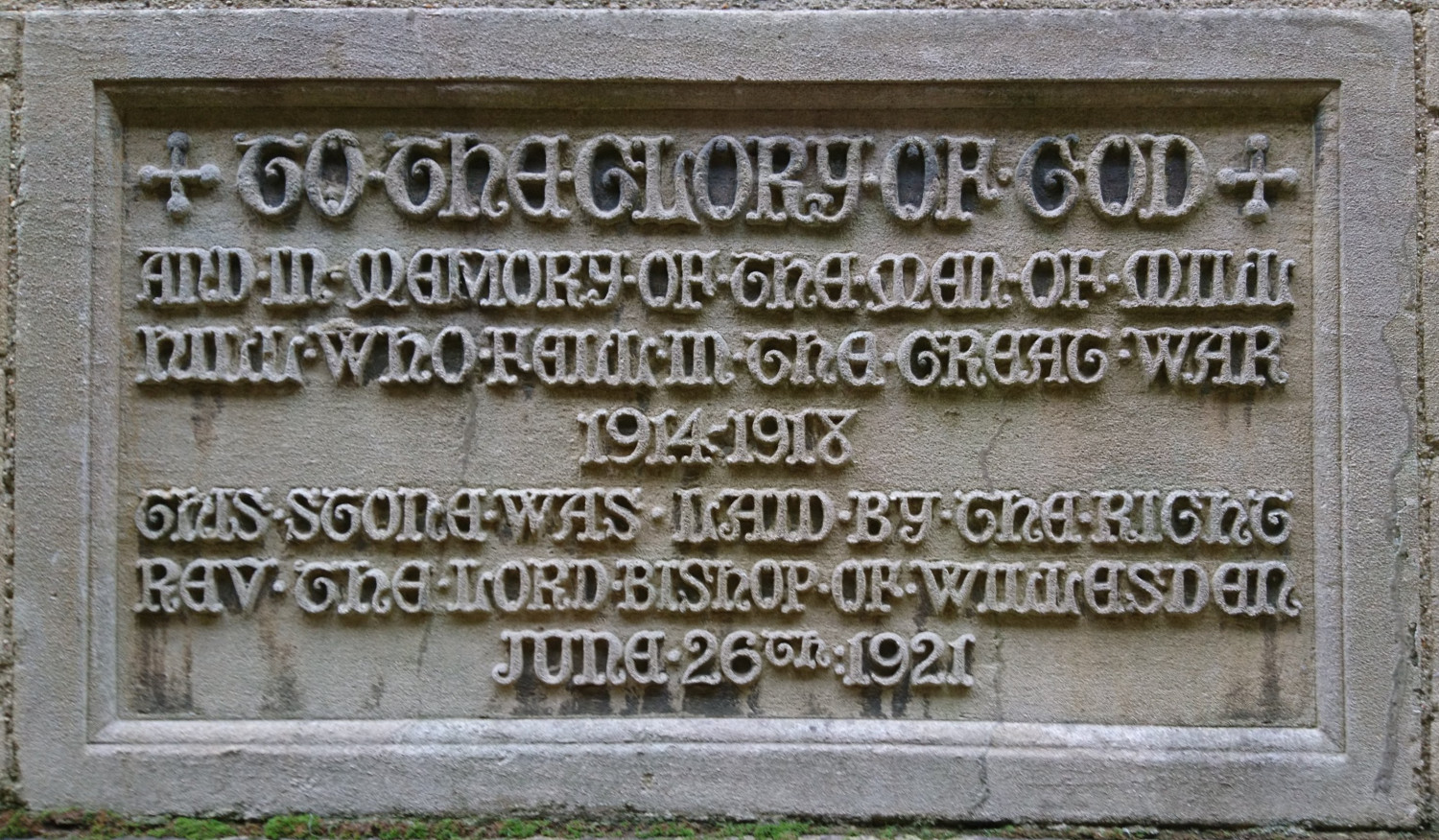In 1876 (some reports suggest 1875) plans were made to provide a building in the Hale district to meet the religious needs of those living there, more than a mile from the Church of St Paul. Mill Hill was slowly being developed as a residential area and would undoubtedly expand in the future.
The Rev. J. Fitzroy, Vicar of St Paul's at that time, conducted services in the district and some time later a site, somewhere in the region where Flower Lane now joins Sylvan Avenue, was given by Commander Percival. A service of dedication was held but the scheme did not go ahead because the Ecclesiastical Commissioners would only accept the gift if better access to the ground could be found.
Little is known of the following thirty years. It was not until 1908 that further action was taken. The Rev. E.B. Hartley approached the Bishop of London's fund for a sum of £900 to purchase a site in Flower Lane suitable for the erection of a Parochial Hall and Church. £300 was put towards the cost of building the Hall and all preliminary arrangements had been made when Mr Hartley was taken ill and died. At a public meeting held in July 1908 it was resolved to continue with the work he had begun and build the Hall to his memory. In March 1910, the scheme was enlarged to include the two back rooms.
 The Hall was built at a cost of £2,800, dedicated and opened on October 24th 1910. The back rooms were used for social purposes, which enabled the main Hall to be used exclusively for worship.
The Hall was built at a cost of £2,800, dedicated and opened on October 24th 1910. The back rooms were used for social purposes, which enabled the main Hall to be used exclusively for worship.  The congregations were immediately so large that there was serious discussion over the possibility of building a new and larger Church and in 1912 a building committee was formed. There were many difficulties, not least the hard job of formulating plans and approving designs. The Architect of the Hall, Mr Alder, was asked to submit a proposal and in due course a sketch was put forward for a building to seat 500 people at a cost of about £5000. It was described as "a modern edition of the old Church at Hevington, near Chatham". This plan appears to have been accepted, for, in 1914, a start on the foundations was about to be made, but the outbreak of war demanded postponement.
The congregations were immediately so large that there was serious discussion over the possibility of building a new and larger Church and in 1912 a building committee was formed. There were many difficulties, not least the hard job of formulating plans and approving designs. The Architect of the Hall, Mr Alder, was asked to submit a proposal and in due course a sketch was put forward for a building to seat 500 people at a cost of about £5000. It was described as "a modern edition of the old Church at Hevington, near Chatham". This plan appears to have been accepted, for, in 1914, a start on the foundations was about to be made, but the outbreak of war demanded postponement.
Throughout-this period the Vicar of St Paul's, the Rev. J.A. Garton, was in charge of the development of St Michael's.
The year 1919 arrived and the building committee enthusiastically resumed its work (see section on Architecture and furnishings). Four new designs were requested and eventually those submitted by the Architects, Caroe and Passmore, were accepted. It was decided that the Church should be erected as a memorial to the men of Mill Hill wiho had fallen in the war.
In March 1920, the Rev. J.A. Garton had-been succeeded as Vicar of Mill Hill by the Rev. E. Howard Cobb, who immediately became active in negotiations to ensure an early start to the building. He acted as foreman enlisting the help of men and boys in Mill hill. The local paper published a picture of Mr. Cobb pushing a wheelbarrow with his little son Michael digging in the foreground.
 |
 |
 |
 |
 |
The first turf was cut by Mr James Fraser, Vicar's Warden, in July 1920 and a number of Churchmen under the leadership of the Vicar worked hard to level the site.
A spade in the vestry records the names of those who dug the foundations, and also the Tea Providers.
At an impressive ceremony on the 26th June 1921 the foundation stone inscribed:
"To the glory of God and in memory of the men of Mill Hill who fell in the Great War 1914 -1918"
was laid by the Bishop of Willesden, Bishop Perrin.
In a cavity under the stone were deposited a Roll of Honour, copies of 'The Times', 'Hendon and Finchley Times', 'Church Times', a Parish magazine and a number of coins dated 1921.
 MILL HILL ABOUT 1900 MILL HILL ABOUT 1900 |
THE STORY OF THE BUILDING  |

